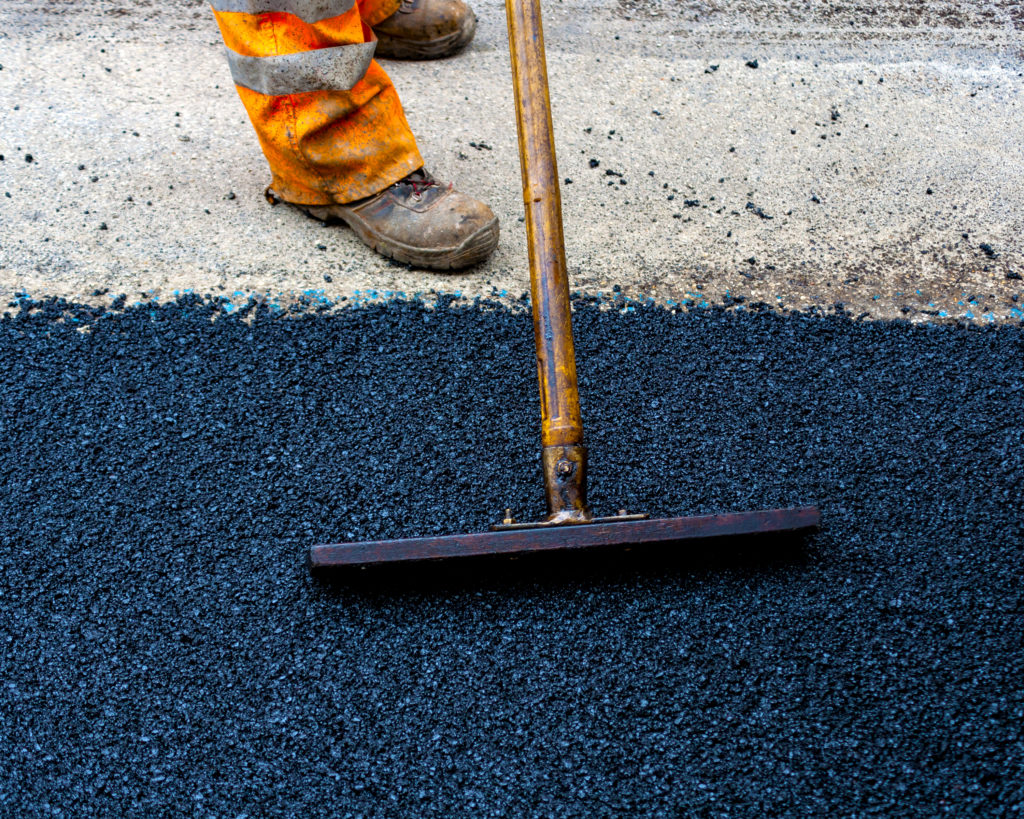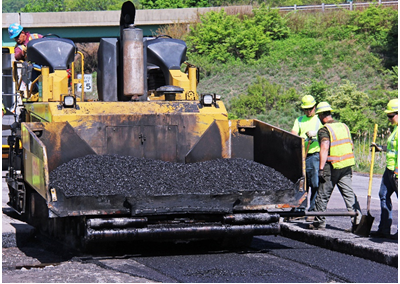Hot Mix Asphalt Paving: Redefining Commercial Residential Or Commercial Property Landscapes
Hot Mix Asphalt Paving: Redefining Commercial Residential Or Commercial Property Landscapes
Blog Article
Opening the Secrets of Hot Mix Asphalt Technology
Checking out the depths of hot mix asphalt technology uncovers a world where careful procedures and exact formulas assemble to shape our roads and framework. The blend of accumulations, fillers, and binders isn't just a building and construction job however a tactical orchestration of sturdiness and effectiveness. As we peer into the intricate dancing of elements, a tapestry of durability and sustainability unfolds. Yet what exists below this surface area of asphaltic proficiency, and what tricks wait to be unveiled in the world of leading developments?
Relevance of Hot Mix Asphalt
Warm Mix Asphalt plays an important role in modern facilities development because of its longevity and cost-effectiveness. As the most generally used leading product for roads, freeways, and parking area, Hot Mix Asphalt uses a variety of benefits that add to its relevance in construction tasks. One key benefit is its ability to stand up to rush hour tons and rough weather conditions, supplying a durable and reliable surface area for transportation networks. Additionally, Hot Mix Asphalt is economical in both first building and construction and long-term upkeep, making it a recommended selection for many infrastructure jobs.
The sturdiness of Warm Mix Asphalt stems from its structure, which includes accumulations, binder, and filler materials that are meticulously chosen and mixed to satisfy particular efficiency demands. Overall, the value of Hot Mix Asphalt in framework development can not be underrated, as it continues to be a keystone of contemporary building and construction methods.
Elements of Asphalt Mixes
The structure of asphalt blends contains meticulously chosen accumulations, binder, and filler materials that are essential for accomplishing specific performance needs. Accumulations are the primary component of asphalt mixes, supplying toughness and stability. These accumulations can be natural, such as gravel or smashed rock, or synthetic, like recycled materials from old sidewalks. The binder, commonly bitumen or asphalt concrete, holds the accumulations together and offers versatility and resilience to the mix. The choice of the binder is critical as it directly influences the mix's performance in different climate condition. Fillers, such as hydrated lime or Portland cement, are utilized to boost the mix's workability and aging resistance. Angled Parking.
The mix and percentage of these parts play a substantial role in determining the quality and performance of the asphalt mix. Designers meticulously make the mix to fulfill details requirements, taking into consideration variables like website traffic quantity, environment problems, and sidewalk life-span. Proper choice and balancing of aggregates, binder, and fillers are important for creating durable, long-lasting asphalt sidewalks.
Combining and Production Techniques

When the aggregates are chosen, the binder, frequently asphalt cement, is included to bind the materials together. The binder's more tips here high quality and quantity considerably affect the mix's stamina, resistance, and flexibility to environmental factors. Additionally, fillers like moisturized lime or Rose city concrete may be incorporated to enhance details features of the asphalt mix, such as its workability or dampness resistance.
During production, the accumulations and binder are heated up, usually in between 250-325 ° F(121-163 ° C ), to promote blending and guarantee proper layer of the accumulations. The mixing procedure needs to be extensive to achieve an uniform mixture that advertises the preferred performance attributes of the asphalt. Various strategies, such as batch mixing or drum blending, are employed to attain constant and high-grade asphalt blends for building projects.
Variables Impacting Asphalt Efficiency
Elements affecting asphalt efficiency encompass a variety of variables that affect the durability, durability, and general top quality of asphalt pavements. One essential element is the top quality of products made use of in the asphalt mix.

Environmental problems also influence asphalt performance. Temperature variations, moisture seepage, and traffic loads can all influence the structural stability of the sidewalk. Design factors to consider, such as pavement thickness and water drainage, are vital regrading in making certain the long-lasting efficiency of the asphalt sidewalk. By carefully thinking about these aspects, contractors and engineers can maximize asphalt efficiency and improve the life span of pavements.
Sustainable Practices in Asphalt Technology

WMA enables for the manufacturing and placement of asphalt blends at lower temperatures contrasted to traditional hot-mix asphalt, resulting in minimized power usage and greenhouse gas exhausts. The usage of permeable asphalt mixes can assist mitigate stormwater overflow concerns by allowing water to infiltrate with the sidewalk and into the ground, promoting all-natural water purification and recharge processes.
Final Thought
In conclusion, hot mix asphalt innovation plays a crucial role in contemporary facilities growth as a result of its resilience and cost-effectiveness. By very carefully stabilizing parts, using appropriate blending methods, and considering different factors, designers can create top quality asphalt mixes that stand check out here up to heavy traffic loads and severe weather. Accepting sustainable practices, such as utilizing warm-mix technologies and recycled products, additionally boosts the ecological friendliness of asphalt technology.
Blending and manufacturing methods in hot mix asphalt technology entail the exact combination and processing of accumulations, binder, and fillers to produce a high-performance and long lasting asphalt mix.Elements influencing asphalt efficiency include a range of variables that influence the toughness, durability, and overall top quality of asphalt pavements. Lasting methods in asphalt technology incorporate various campaigns intended at minimizing the environmental effect of asphalt production and paving procedures. By incorporating redeemed asphalt pavement (RAP) and recycled asphalt tiles (RAS) into brand-new asphalt mixes, the market can substantially reduce the intake of raw materials and power, while also lowering garbage dump waste.
WMA permits for the production and positioning of asphalt blends at lower temperature levels compared to standard hot-mix asphalt, resulting in reduced energy intake and greenhouse gas emissions.
Report this page